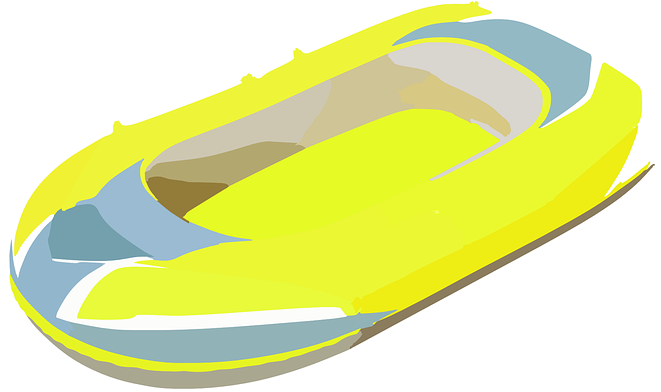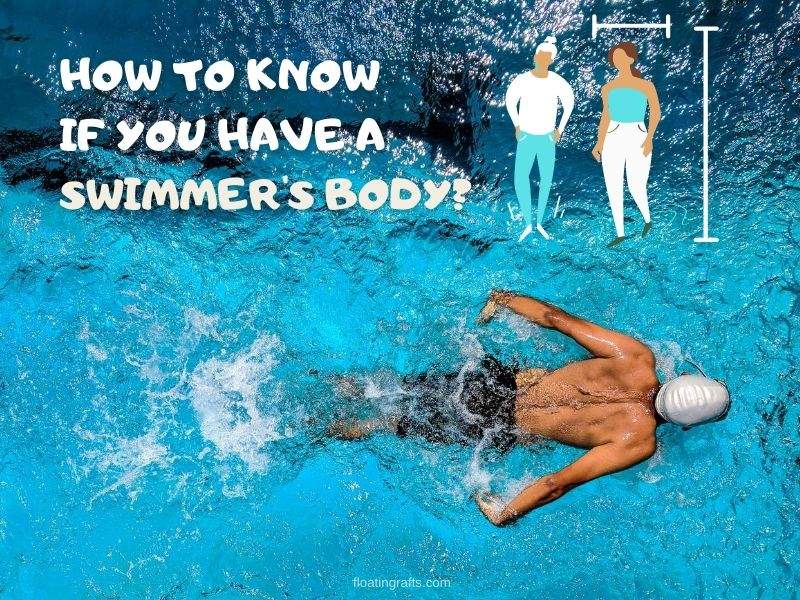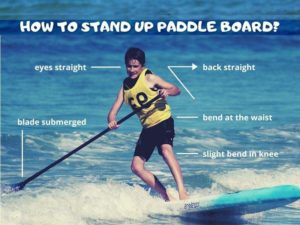You might be surprised every time strangers have approached swimmers and said, “Let me guess…you’re a swimmer?” Well…It is not very surprising. There are several physical traits that are tell-tale giveaways of a person spending most of their time in a swimming pool.
What is Swimmer’s Body?
Although swimmers with a broad assortment of body standards have found success in the sport, most international swimmers tend to share the same physical attributes. Swimmer’s bodies are lean and toned without too much bulky muscle. Swimmer possesses above-average height, long torso and upper limbs, broad shoulders, defined abdominal areas, and other noticeable physical characteristics. A unique feature of a swimmer’s physique is the upper back. A swimmers back creates a well-defined “V,” which tapers to a narrow waist. Many of these physical features can be achieved with a focused and dedicated swim regimen.
Signs that You Have a Swimmer’s Body
1. Height:
One of the most apparent physical factors that provide swimmers a distinct advantage in the pool is height. Swimmers at the international level are inordinately tall. The average size of swimmers in the Rio 2016 Olympics finalists was six feet two inches (1.88meters) for men and five feet nine inches (1.76 meters) for women, substantially higher than average males and female’s height. The average height of a male 100m freestyle world record holder is six feet four-inch, dating back to 1976. Michael Phelps stands at six feet four inches tall (1.93m), and Kliment Kolesnikov and Michael Andrew are six feet five inches tall (1.96m).
Several top international women swimmers are also very tall, with an average height of 1.83 meters. 50 and 100-meter freestyle World record-holder Sarah Sjostrom stand at six feet (1.83 meters), while 400, 800, and 1500 freestyle world record holder Katie Ledeckie is also of the same height.
A tall physique helps enhance swimming performance, as it exerts less strength and effort to move through the water for tall people, allowing them to swim for longer duration without getting tired. A longer span of swimmer’s results in reduced wave drag, so the shape of a taller swimmer is more efficient in the pool.
However, height is not a sure shot for success. There are several examples of swimmers making a successful career without being born with an extended height. Swimming distance legend Janet Evans was 5’5. David Berkoff, whose underwater dolphin kick was one of the 1988 Seoul Olympics stories, was 5’8. Currently, Japanese superstar Kosuke Hagino is five feet eight inches.
2. Flexibility:
The overhead movement required for swimming means swimmers have flexible lats, shoulders, and back, due to whipping their arms over the shoulders for thousands of meters on end. Flexibility is a critical asset for swimmers. Lithe shoulders allow swimmers to rotate their bodies while maintaining their form in long-axis strokes. During quick access strokes, swimmers with flexible shoulders can press their chest down more, lengthening their strokes and increasing efficiency.
Flexibility in swimmers is not limited to the upper body only. Ankle flexibility is critical for a forceful kick. Flexible ankles increase the surface area of the feet, using them like flippers to push more water backward, increasing forward propulsion. Elastic ankles also allow more force to be exerted by the gluteus maximus and quadriceps.
3. Anthropometry:
Anthropometry is the science of studying systematic measurements of the human body. Besides the obvious physical attributes, swimmers tend to possess particular physical distinctions that give them a definite advantage in the pool. For example, swimmers with long wingspans can reach farther and pull more water with every stroke. Michael Phelps is often termed as the perfect specimen of a swimmer’s body. Standing at six feet four inches, Phelps has a wingspan of a 6-foot-7-inch, but short, powerful legs, which are the size of someone who is six feet tall.
A research conducted by Jonty Skinner, former 100 freestyle world record-holder and former resident USA National Team coach, found “limb length and size play a huge role in event potential, and the relationship between arm length and height gives a better picture of the athlete’s potential. Swimmers with a high anthropometry score – arms are relatively long in relation to their height—tend to do best in the long-axis strokes of freestyle and backstroke.”
Shorter legs have known to be advantageous for swimmers, as they generate more power without creating drag. Other anthropometric traits conducive for swimming are large hands, feet, and lungs. Large hands on the end of long arms and feet act like natural paddles and fins, propelling swimmers through the water more effectively, while big lungs improve buoyancy and durability.
4. Hyperextension:
Hyperextending joint means extending beyond a straight line, also known as being double-jointed. When an elbow or knee is double-jointed, it allows the limbs to bend further backward. This physical attribute enables them to grab more water with each stroke and push a more significant water volume with each kick.
5. Muscle Fibers:
There are two general types of skeletal muscle fibers: fast-twitch and slow-twitch. Fast-twitch muscles are strong and are used in powerful bursts of movement like sprinting; however, they get tired quickly. Slow-twitch muscle fibers generate less force but are ideal for endurance events, including distance swimming.
Fast-twitch A-fibers can be recruited to either aerobic or anaerobic training, while fast-twitch B fibers are geared toward anaerobic conditions. The muscle fiber makeup of a swimmer – especially the balance of fast-twitch and slow-twitch fibers – is a determining factor in a swimmer’s potential. Swimmers with the most significant numbers of fast twitch-A fibers are thought to have the greatest potential in swimming and have the possibility to swim in a wide range of events.
6. Mental Strength:
While a swimmer’s body’s physical characteristics are extensively discussed, one of the primary reasons to become an elite swimmer or achieve the ideal swimming body is mental strength. Discipline, focus, confidence, and good work ethic are arguably just as vital as having physical talent. It takes considerable effort to transform natural ability into achieving success. Without a growth mindset where you are continually looking for ways to improve, it is difficult to fulfill the potential, no matter how physically gifted you are.
7. Physical Traits: Despite all of the relative strength and the considerable amount of time spent in the pool, swimmers tend to be lean and toned. Water is nearly 800 times denser than air at sea level. Swimmers compete in a medium that tries to slow them down at every turn. Hence, they need to spend more energy while wading through water while maintaining form and speed.
8. Lats: Lats, derived from the Latin word latissimus dorsior, are the largest muscles in the back, stretching across the entirety of the back, from the spine to shoulder. These muscles are extensively in action in all swimming strokes, and hence grow considerably large and are the hallmark of the classic swimmer physique of a V-shaped upper body.
9. Swimmer shoulders: They are so pronounced that they are explicitly termed. Countless repetitions of swimming strokes create hypertrophy on the shoulders of a swimmer.
10. Triceps: Most swimmers possess clearly defined triceps growth due to repetitive arm movements in the pool. These muscles are essential in propelling the body through the water.
11. Abdominals: All swimming strokes employ the core muscles; hence the abdominal area tends to be highly defined. The caloric burn and fast metabolism result from an intense cardio exercise such as swimming.
12. Powerful legs: Swimmers tend to have robust and toned legs without extra bulk. Swimming requires powerful legs for swift movements underwater, starts, turns, and overall forward movement; however, excessive bulky legs increase the weight to pull and drag. Swimming is an intense aerobic activity and requires the effective use of the entire body, and legs play a critical role in a swimmer’s success.
Swimming is am an intense cardio workout that burns a lot of calories and speeds up your metabolism. This reduces the fat and gives the appearance of a slimmer waist.
13. Super Dry Skin: Swimmers’ skin tends to be very dry to spending countless hours submerged in chlorine. You can put lotion on three times a day, and the skin still rivals the Sahara Desert.
Is it possible to get a swimmer’s body without even swimming?
While it is possible to create the look of a swimmer’s body without ever actually getting in the pool, the outcome will probably not be the same. Incorporating a strict regimen that includes full-body targeted weight lifting is essential with a nutritious diet.
What to do if you don’t have the perfect swimmer body?
As mentioned in the article above, there are specific physical attributes that are natural to swimmers. Swimmers don’t tend to be naturally gifted, but the most naturally talented individuals become elite swimmers. We cannot control the body we were born with.
However, with hard work and dedication, you can maximize what natural talent you have and still achieve great things.
To explore more about floats and rafts, visit floating rafts




